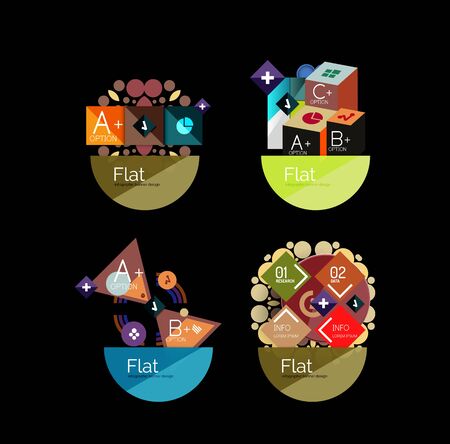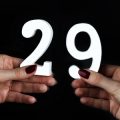Introduction: Setting the Scene — Tarot Meets Albion
In recent years, there has been a palpable revival of interest in tarot across the United Kingdom, echoing through bookshops in Brighton, cafes in Bristol, and even trending hashtags on British social media. Yet, this fascination with divination is not an isolated phenomenon; it resonates with the deep-rooted enchantment of British folklore—those age-old tales of faeries on misty moors, wise women in rural hamlets, and spirits said to linger at ancient stone circles. While tarot cards originated far from these isles, their symbolic language seems curiously at home amidst the mythic landscape of Albion. As both tarot and folklore are rediscovered and reimagined by new generations, it feels particularly timely to explore where they intersect, diverge, and mutually illuminate one another. In doing so, we can uncover not just the enduring power of storytelling and symbolism but also what these traditions reveal about modern British identity—and why their union continues to captivate hearts and minds across the country.
2. Origins and Evolution: Mystical Roots versus Local Legends
When exploring the entwined histories of tarot and British folklore, its vital to recognise their fundamentally different origins and evolutionary paths. Tarot cards, as we know them today, first emerged in continental Europe—most notably in Italy during the 15th century. Initially devised as playing cards, they gradually became intertwined with mysticism and occultism, particularly during the 18th and 19th centuries. Esoteric societies across Europe—such as the Hermetic Order of the Golden Dawn—embraced tarot as a key to unlocking hidden spiritual truths, embedding it within a framework of symbolic mystique and philosophical depth.
Conversely, British folklore is rooted in a rich oral tradition that spans centuries. Rather than emerging from an individual invention or discrete event, British myths and legends grew organically from local customs, pagan beliefs, and the lived experiences of ordinary people. These tales were passed down through generations, shaped by historical events like invasions, plagues, and religious transformations. Whether it’s stories of faeries on Dartmoor or tales of Robin Hood in Sherwood Forest, these narratives reflect the collective psyche of Britain’s diverse regions.
A Comparative Glance at Cultural Foundations
| Tarot | British Folklore | |
|---|---|---|
| Geographical Roots | Continental Europe (primarily Italy and France) | British Isles (England, Scotland, Wales, Ireland) |
| Transmission | Printed cards; esoteric manuscripts | Oral storytelling; local performances |
| Main Influences | Mysticism, occultism, Renaissance symbolism | Pagan rituals, local myths, historical events |
| Cultural Role | Spiritual exploration; fortune-telling; personal insight | Moral lessons; community identity; entertainment |
Mystical Imaginations versus Communal Identity
The allure of tarot lies in its universal symbolism—archetypes like The Magician or The Tower speak to human experience in ways that transcend geography. In contrast, British folklore is fiercely localised: its characters, settings, and lessons are often intimately tied to specific places and communal histories. Yet both traditions captivate cultural imaginations by offering frameworks for understanding the unknown—be it through the cryptic imagery of tarot or the cautionary wisdom woven into folk tales. As such, while their roots may be worlds apart—one steeped in arcane symbolism from continental salons, the other in fireside yarns spun across windswept moors—they each continue to shape how communities make sense of mystery and meaning.
![]()
3. Archetypes and Beings: Shared Symbols, Divergent Archeologies
One of the most captivating aspects when comparing tarot and British folklore lies in their symbolic worlds, where archetypes reign supreme yet manifest in distinct cultural hues. The Major Arcana cards—such as The Fool, The Magician, or The High Priestess—each encapsulate universal themes of journey, transformation, power, and wisdom. These figures serve as mirrors to the collective unconscious, resonating with seekers across centuries and continents. Yet, when we turn our gaze to the misty lanes of British folklore, we encounter a different pantheon: the enigmatic Green Man peering from church carvings and woodland glades; mischievous fairies whose allegiances waver between benevolence and peril; spectral black dogs haunting lonely crossroads and ancient barrows.
While both traditions lean heavily on archetypal storytelling, their characters spring from divergent soils. Tarot’s Major Arcana often draw from Renaissance esotericism and continental mythologies, offering more abstracted or universalised archetypes. In contrast, British folkloric beings are deeply rooted in locality—the landscape itself shapes them. The Green Man is not just a symbol of rebirth but an embodiment of Britain’s seasonal cycles and ancient woodland lore. Fairies (or the Good Folk, as they’re sometimes cautiously called in rural England) evoke the liminality of wild places and the old belief that one misstep might whisk you away to another world.
Despite these differences, intriguing parallels emerge. For instance, The Fool’s leap into the unknown echoes tales of mortals stumbling into fairy rings—ventures full of risk and transformation. The Hermit’s lantern recalls the will-o’-the-wisp, guiding (or misleading) travellers through marshes at night. Meanwhile, the black dog—a harbinger of doom or a guardian spirit—shares with Death from tarot that chilling ambiguity: both warn us of endings but also hint at unseen beginnings.
Ultimately, the symbolic language of tarot cards and British folklore both reflect humanity’s need to make sense of the unseen forces shaping our lives. Yet their divergent roots—continental mysticism versus local legend—infuse their archetypes with unique flavours. By exploring these shared symbols and contrasting origins, we discover not only how meaning travels across borders but also how it grows new branches when rooted in local soil.
4. Practices and Rituals: Readings in the Pub, Charms by the Hedge
When we explore how tarot readings and folkloric practices weave through British cultural life, what stands out is their lived, everyday quality—less cloaked in mystique and more a matter of tradition, community, and even conviviality. It’s not uncommon to stumble upon a tarot reader set up in the corner of a bustling pub, offering insights over pints and banter, just as one might find someone quietly crafting charms from hedge-plucked herbs on a village green. These practices, though rooted in different historical soils, often overlap and adapt to modern British rhythms.
The Setting: From Hearthside to High Street
Tarot and traditional folk magic both find homes in varied settings across Britain. Tarot readings can happen anywhere from trendy London cafés to rural festivals, while folk rituals remain anchored in local spaces like parish halls or at the edge of ancient woodlands. The table below contrasts these environments:
| Practice | Urban Setting | Rural Setting |
|---|---|---|
| Tarot Reading | Bookshops, pubs, markets | Village fairs, private homes |
| Charm-making & Divination | Cultural events, workshops | Hedgerows, local gatherings |
| Seasonal Rites | Pagan festivals in city parks | May Day dances on commons |
Layered Traditions: Mixing Old with New
The British penchant for blending traditions means that tarot readings sometimes incorporate elements of folk magic—think charms given with a reading for luck or love—or that old customs like wassailing are performed alongside newer divinatory trends. Seasonal rites such as Beltane or Samhain often serve as meeting points where tarot spreads and folklore-based rituals co-exist, reinforcing a sense of cyclical time and shared heritage.
Social Function and Community Spirit
What truly marks these practices as distinctively British is their role in fostering community. Whether it’s a group gathering for an impromptu reading during quiz night at the pub or neighbours exchanging handmade charms at Lammas, these rituals reinforce belonging and continuity. In this way, tarot and folklore are less about solitary mysticism and more about collective experience—an echo of Britain’s communal past reimagined for today’s society.
Cultural Overlaps: A Living Tradition
The interplay between tarot and folklore shows that British magical practice is not static but evolving. As new generations reinterpret both the cards and the customs of the hedgerow, they create hybrid forms unique to their own contexts—a testament to Britain’s capacity for cross-pollination between the ancient and the avant-garde.
5. Language and Lore: The Queen’s English and the Tarot’s Tongue
If there’s one thing that sets British folklore apart, it’s the remarkable tapestry of language woven into its tales—each thread a different dialect, idiom, or turn of phrase. When these linguistic quirks meet the world of tarot, something truly unique emerges. Tarot cards, with their own symbolic “tongue”, become even more layered when filtered through the nuances of British English.
From Cockney to Celtic: Regional Flavours in Tarot
Consider how a simple reading might sound in London’s East End, where cockney rhyming slang slips effortlessly into conversation. A card like The Fool could be spun as “the old trouble and strife”, giving new life and local colour to archetypal meanings. Travel north to Yorkshire or across to Cornwall, and you’ll find regional dialects peppering interpretations—each lending a distinctly local flavour to the universal symbolism of tarot.
The Power of Storytelling: Folklore Embedded in Words
British folk tales are rich with their own lexicon—think of the riddles spun by cunning folk or the whispered warnings about fae folk in Scottish glens. These storytelling traditions infuse tarot readings with a sense of place and history, transforming a generic spread into an echo chamber for ancestral voices. It’s not just what the cards say, but how they’re spoken about that shapes meaning.
Contrast and Connection: Tradition Meets Transformation
This interplay between the Queen’s English and the tarot’s tongue highlights both contrasts and connections. While tarot originated far from Britain’s shores, its integration into British culture has seen it dressed up in local idioms and expressions—sometimes playful, sometimes profound. The result is an ongoing conversation between ancient cards and ever-evolving language, each enriching the other while maintaining their distinct identities.
6. Modern Crossroads: Fusion, Friction and Cultural Revivals
In present-day Britain, tarot and local folklore stand at a fascinating crossroads, where the boundaries between tradition and innovation blur. The resurgence of interest in esoteric practices—whether through the lens of spirituality, artistry or pop culture—has sparked a creative dialogue between tarot’s continental origins and the uniquely British tapestry of myths and rituals. Yet, this intersection is far from seamless; it is marked by dynamic fusion, occasional friction, and spirited revivals.
The Pop Culture Alchemy
Contemporary British media frequently intertwines tarot symbolism with homegrown legends to produce novel narratives. Television dramas, like those on Channel 4 or BBC, have woven tarot archetypes into stories set against misty moors or ancient woodlands. Graphic designers and illustrators draw inspiration from both Rider-Waite imagery and Celtic motifs, resulting in decks that pay homage to Green Men, selkies, or Arthurian figures alongside more traditional tarot archetypes. This pop culture alchemy reflects a society eager to refresh its mystical identity while remaining rooted in its cultural soil.
Artistic Hybridity and Experimentation
British artists and craftspeople are at the vanguard of blending these traditions. Tarot readings at summer solstice gatherings might feature cards illustrated with local flora and fauna, echoing folk art aesthetics. Zine-makers and indie publishers produce guidebooks that interpret tarot through the lens of British seasonal festivals—Beltane, Samhain, or Lammas—highlighting cycles familiar to both pagans and folklorists. This hybridisation is not merely aesthetic but also philosophical, encouraging practitioners to reinterpret divinatory meanings within distinctly British life rhythms.
Cultural Tensions and Purist Perspectives
However, not all welcome this fusion uncritically. Some folklorists and occult historians argue for keeping tarot and native lore distinct, citing concerns over historical accuracy or dilution of meaning. Community discussions on social media platforms reveal debates about authenticity: Is a tarot deck adorned with Morris dancers or Cornish piskies still ‘tarot’ as traditionally defined? Or does it risk becoming kitsch? These tensions highlight the ongoing negotiation between preservation and reinvention in Britain’s spiritual landscape.
Revival Rituals and Grassroots Movements
At the grassroots level, community rituals often serve as living laboratories for this cultural interplay. From urban witchcraft collectives in Manchester to rural folk festivals in Devon, groups experiment with integrating card reading into Maypole dances or Wassailing ceremonies. Such events reflect a desire to make esoteric practice accessible and relevant in modern contexts while honouring ancestral wisdom.
Ultimately, contemporary Britain’s approach to tarot and folklore is neither static nor monolithic. Instead, it is an ever-evolving patchwork—sometimes harmonious, sometimes contentious—that mirrors broader questions of heritage, identity, and creative possibility in a multicultural society. The modern crossroads does not demand definitive answers; rather, it invites ongoing exploration along winding paths where past meets present under the enigmatic gaze of both cards and old gods.
7. Conclusion: New Mythologies and Lasting Charms
The intricate dance between tarot and British folklore continues to weave new mythologies into the fabric of contemporary British culture. While both traditions draw from a rich tapestry of symbols, archetypes, and storytelling, their interplay does more than simply echo the past—it actively shapes the collective identity and imagination of communities throughout the UK. As tarot cards mingle with tales of selkies, green men, and cunning folk, they forge connections that transcend the boundaries of time and tradition.
Today, tarot readings in Britain might be held in urban cafés or at rural festivals alongside Morris dancers and Maypole celebrations. The language of the cards is filtered through distinctly British sensibilities—dry wit, a penchant for irony, and an enduring love for mystery—making each reading uniquely local while remaining universally resonant. This synthesis invites people to reimagine what it means to seek guidance or make meaning in their lives, using both ancient folk wisdom and contemporary spiritual practice as tools.
Looking forward, the relationship between tarot and folklore in the UK seems poised for further evolution. With a new generation exploring identity through multicultural lenses and digital platforms, we may well see the emergence of hybrid mythologies: tarot decks inspired by regional legends, or folk stories retold with a modern twist involving fortune-tellers and mystical archetypes. The British landscape itself—its moors, forests, and old stone circles—continues to inspire both practices, anchoring them in a sense of place that is both real and enchanted.
Ultimately, the enduring charm of both tarot and British folklore lies in their capacity to adapt, absorb, and reflect the shifting tides of cultural consciousness. They remind us that myth-making is an ongoing process—a collaborative act between past and present storytellers. As such, these intertwined traditions will likely remain at the heart of British imagination, inspiring wonder, debate, creativity, and perhaps even a little magic for generations to come.


